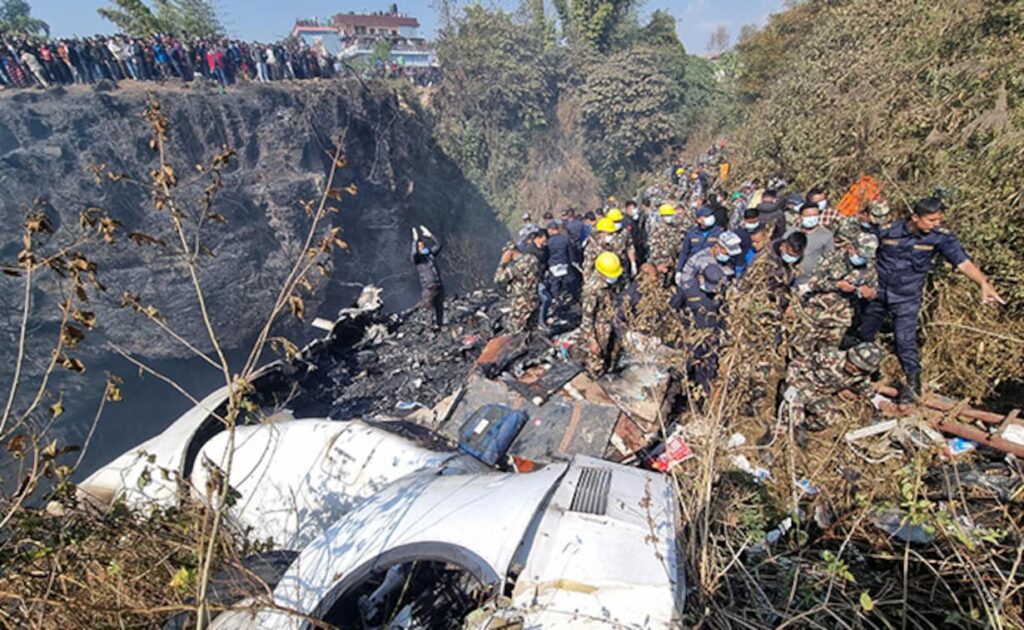Nepal Plane Crash: Local on How Fire, River, and Bushes Hampered Rescue Operation
On Sunday morning, the Yeti Airlines’ Twin Otter aircraft crash-landed at the banks of Seti River near Pokhara, killing 68 of the 72 passengers on board. The plane was flying from Kathmandu to the resort city of Pokhara. The plane crashed just after it attempted to land at the newly-opened airport in Pokhara.

Local villagers were the first to rush to the scene of the crash and began their rescue efforts immediately. Arun Tamu, a local whose house was situated near the site of the crash, recounted the chain of events that followed the disaster. Tamu said he and the rest of the villagers initially tried to douse the fire from the wreckage by bringing buckets of water.
However, their rescue efforts were hampered by the treacherous terrain on the banks of the Seti River. Also, Tamu said it was difficult for the villagers to go near the site of the crash. This makes it difficult for them to conduct an effective rescue operation.
The crash site is situated in an area with difficult terrain and is surrounded by thick bushes, difficult for rescuers to reach the site. The terrain also hampered the arrival of rescue teams, who had to trek through the thick bushes and steep terrain to reach the crash site.
The Nepal Police and the Armed Police Force were the first to reach the site of the crash, followed by rescue teams from different agencies. However, the difficult terrain was an obstacle to the rescue teams’ efforts to reach the crash site and save the passengers.
The crash of the Yeti Airlines’ Twin Otter aircraft has highlighted the challenges of operating in Nepal’s difficult terrain. The hilly and mountainous regions of Nepal pose a challenge to air travel, making it necessary for operators to be extra vigilant.



